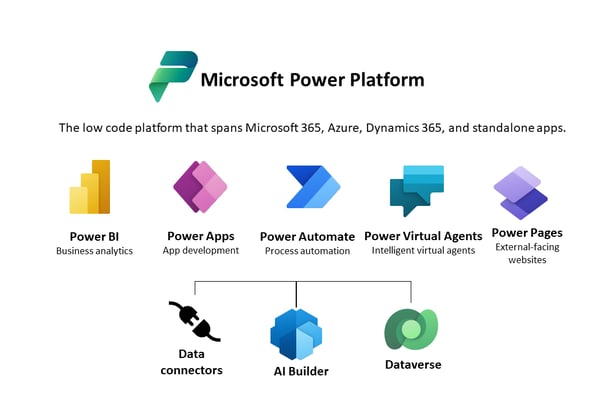Microsoft Power Platform
This post briefly introduces Microsoft Power Platform and its components.
2/2/20241 min read
The Power Platform provides organizations with the opportunity to empower their team members to build their own solutions through an intuitive low-code or no-code set of services.
Power Platform can add value to any business by helping you to analyze, act, and automate. Act by building custom apps in Power Apps, automate processes based on the data you collect in Power Automate, and analyze the data you have collected in Power BI.
It is composed of five key products:
Power Apps provides a rapid low code development environment for building web and mobile applications for business needs.
Power Automate lets users create automated workflows between applications and services for repetitive business processes.
Power BI is a business analytics service that delivers insights for analyzing data through data visualizations.
Power Virtual Agents enables users to create powerful chatbots using a guided, no-code graphical interface.
Power Pages enables users to rapidly design, configure, and publish websites that seamlessly work across web browsers and devices.
In addition to the products listed above, there are additional tools that enhance the solutions you create on the Power Platform. Some of these are:
AI Builder allows users and developers to add AI capabilities to the workflows and Power Apps they create and use.
Microsoft Dataverse is a scalable data service and app platform which lets users securely store and manage data from multiple sources and integrate that data into business applications using a common data model.
Connectors enable you to connect your data and actions easily and cohesively to build apps (using Power Apps) and workflows (using Power Automate). With over 900 prebuilt connectors, Power Platform helps to simplify integration with both internal and external systems.


Contacts
info@usecasefact.com
Location
Toronto, ON, Canada

